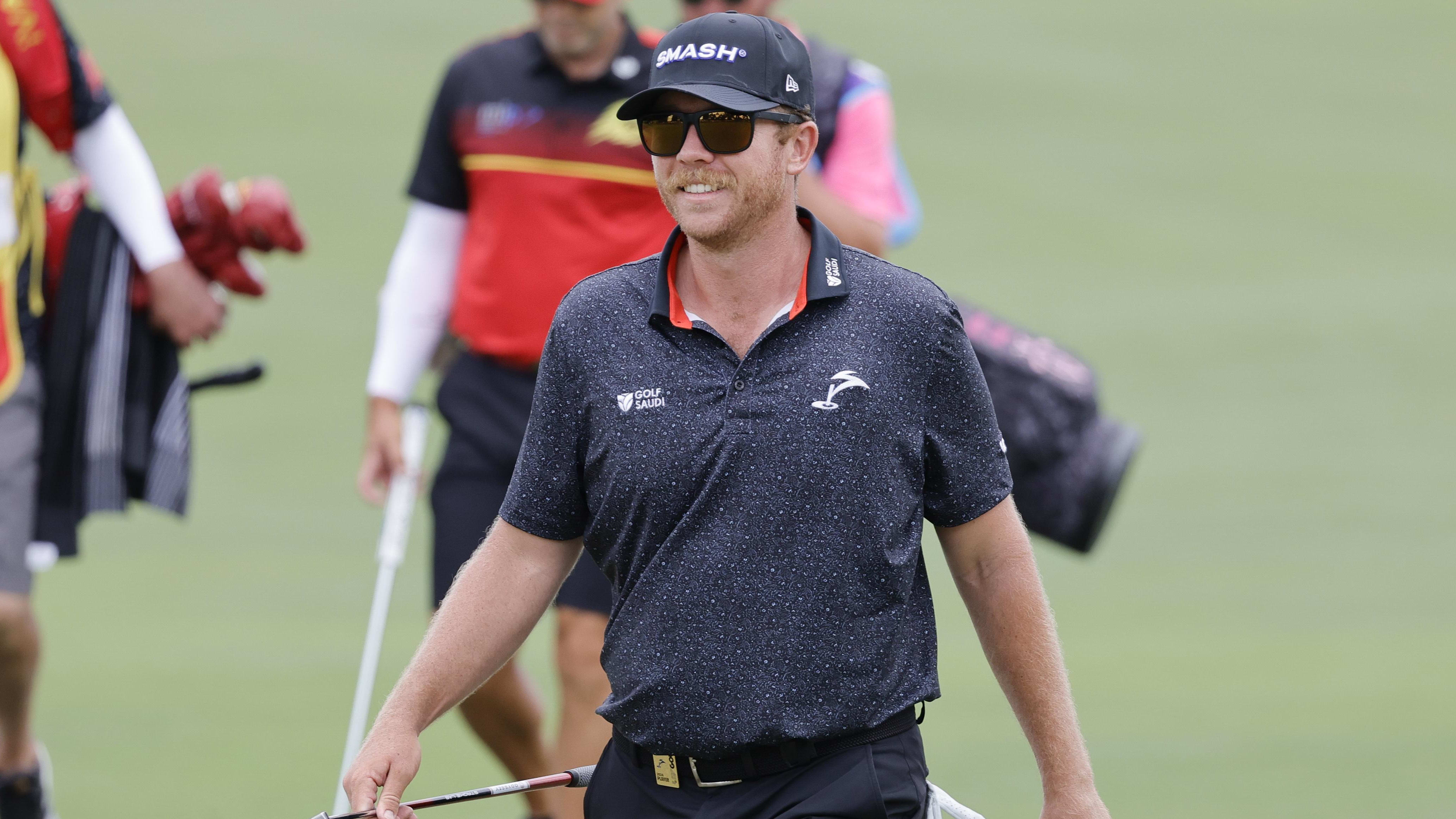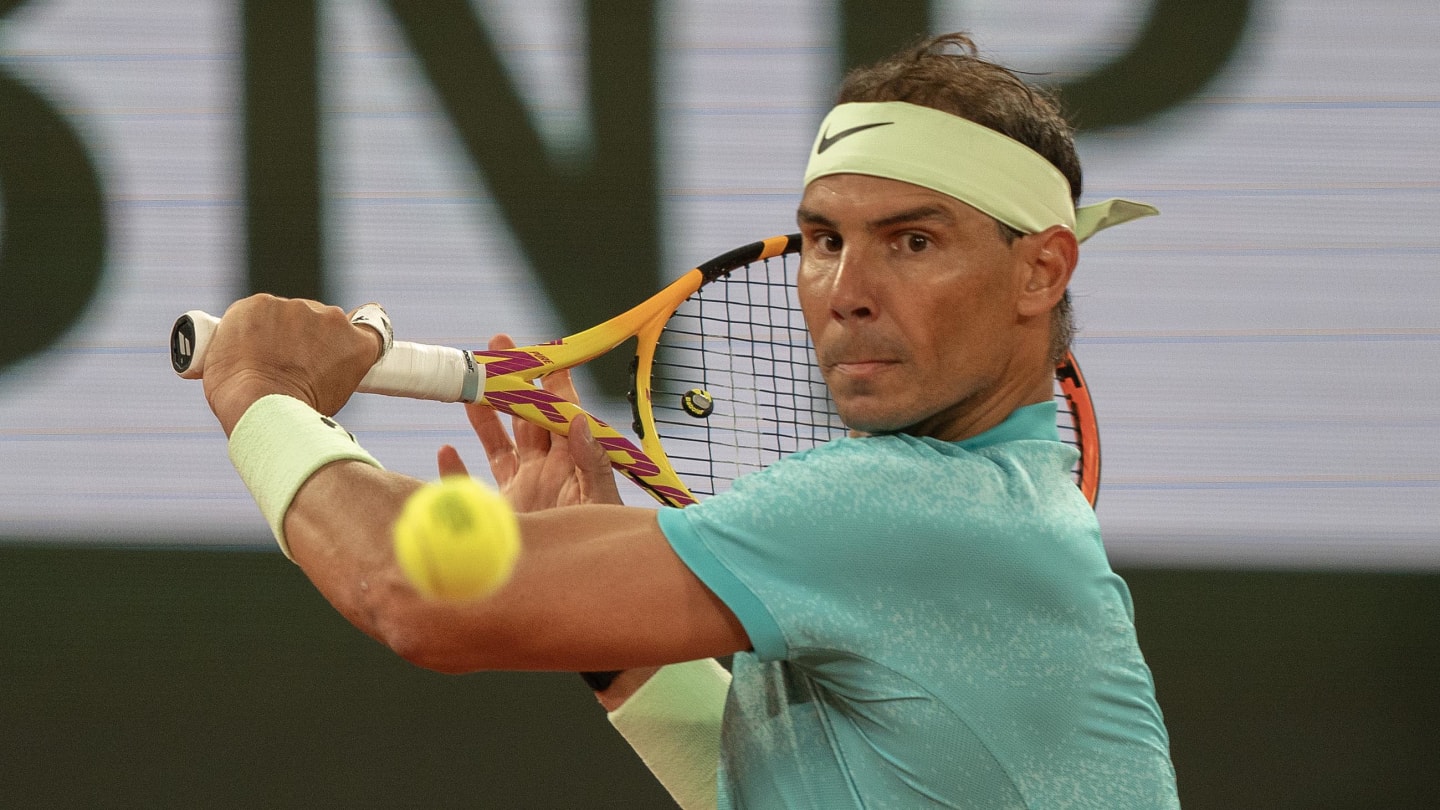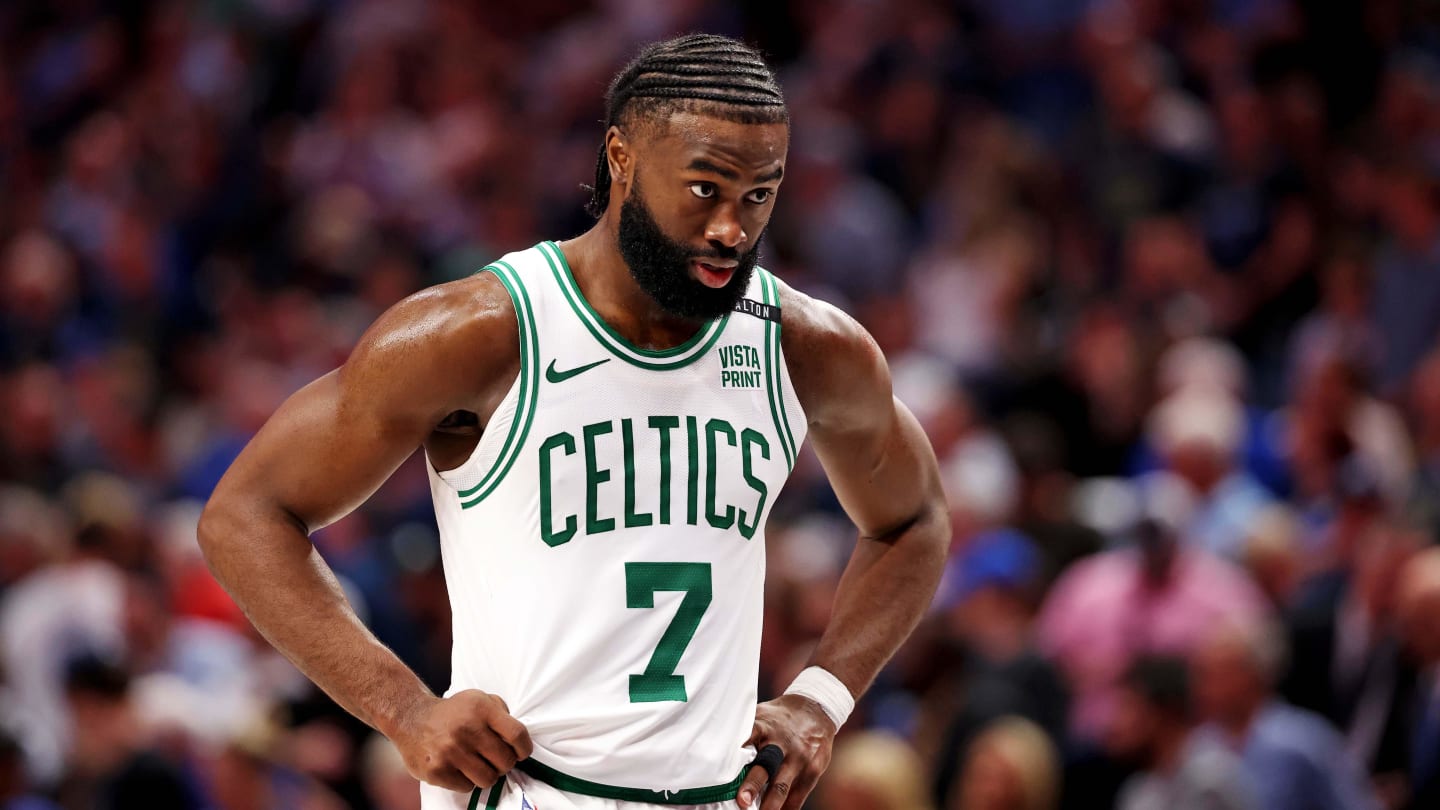The man who first reached out to make a deal with the Public Investment Fund of Saudi Arabia has since resigned from the PGA Tour Policy Board in frustration over the ensuing negotiations.
The popular Tour player who was vociferous in his criticism and dislike of LIV Golf for the better part of a year softened his stance, resigned from the board, tried to get back on and is now among those pushing for a deal.
The game’s biggest name, who for years appeared indifferent to the business of the PGA Tour, was hastily added to the policy board at the urging of his peers, without a term limit.
And the PGA Tour, for the majority of its existence a non-profit membership organization, formed a for-profit arm that has already received $1.5 billion of investment with an equity program set up for players—with more to come.
A good bit has changed in the year since the shocking “framework agreement” was announced on the Tuesday morning of the week prior to the U.S. Open, with PGA Tour commissioner Jay Monahan appearing on camera with Yasir Al-Rumayyan, the governor of the PIF—which funds LIV Golf—pledging to put their differences aside.
What hasn’t changed? LIV Golf.
Yes, the league added a 13th team, captained by its biggest offseason signing, Jon Rahm. Longtime recluse Anthony Kim emerged to take a wild card spot in the 54-player lineup. Bryson DeChambeau has found his game, contending in two major championships this year.
But the idea that LIV Golf would be shuttered, diminished or marginalized—all surmised or suggested in the aftermath of the deal—has not materialized.
In fact, LIV Golf has soldiered on, adding C-suite executives, signing sponsorship deals, putting together a schedule for 2025 and beyond.
“The spigot is now wide open for commercial sponsorships, blue-chip companies, TV networks,” said Greg Norman, the Hall of Fame golfer who is LIV Golf’s CEO and commissioner. “LIV is and will continue to be a standalone enterprise. Our business model will not change. We changed history and we’re not going anywhere.”
Norman said that to stunned LIV Golf staffers in the aftermath of the June 6 agreement a year ago. His comments were viewed with immense skepticism as some wondered if he would survive with a “merger” or alliance. Norman, like almost everyone in the game, was unaware that a deal was going on. And he was somehow pledging that LIV Golf would be better and not going anywhere?
So far, Norman, who maintains he is not privy to PIF’s negotiations with the PGA Tour, has been correct.
Revolving board seats, one PIF meeting
Jimmy Dunne, who first reached out to Al-Rumayyan with a text in the spring of 2023, resigned from the Policy Board last month. Rory McIlroy, who said he’d “retire” before ever joining LIV Golf, has called for a deal between the parties. Tiger Woods was added to the policy board as a player director last summer. And Strategic Sports Group, a private equity company, pledged up to $3 billion, with an initial investment of $1.5 billion in January.
But negotiations with the PIF have, by most accounts, been sporadic. Woods and the other player directors on the board did not meet with Al-Rumayyan or anyone from the PIF until March. Player directors such as Webb Simpson and Peter Malnati said as late as that meeting in March that they were not even aware of what the PIF wanted as part of a deal.
McIlroy, at the PGA Championship, expressed concern over Dunne’s departure. But Jordan Spieth, a player director who in February suggested that PIF investment was no longer necessary, said: “I think the narrative that things are in a bad place and are moving slowly and some of the things that are asked to me or said are untrue. I know that it’s false, actually. Things are actually moving positively from both sides. I think ultimately we’ll end up in a place where professional golf is maybe the best that it’s ever been. I think both sides believe that.”
Nobody knows what that means.
Will LIV players be permitted to return to the PGA Tour in any limited way? Will there be a separate competition, as McIlroy has proposed, that brings together all of the top players from around the world outside of the major championships? Could LIV Golf’s schedule be reduced and folded into a new PGA Tour Enterprises endeavor? Played in the fall? Continue to run concurrently?
Those are just ideas, none of which seem to be thwarting LIV’s efforts to keep doing what it is doing.
“We know it’s going to be here, bigger, badder and better than ever before,” DeChambeau said. “It’s just going to keep growing over the next five to 10 years.”
LIV hiring while hunting for money
LIV Golf is playing the eighth event of its 14-tournament 2024 schedule this week in Houston. Unlike its original intent to avoid some of the higher profile PGA Tour events, it is being played the same week as the Tour’s Memorial Tournament, the event hosted by Jack Nicklaus.
The idea that LIV is “additive” as Norman has said on several occasions is counter to the scheduling. LIV’s tournaments on the CW Network are played in the same 1–6 p.m. ET time zone regardless of location and on tape delay when overseas. That is the traditional time slot for PGA Tour events as well, and forces those who might want to watch both to either choose or switch back and forth.
Whether LIV’s decision to play against Nicklaus’ longtime tournament is out of defiance or simply a desire to play closer to the major championships is unclear—LIV is also playing in Nashville the week after the U.S. Open when the PGA Tour has another signature event, the Travelers Championship. (Also, the Memorial has traditionally been two weeks prior to the U.S. Open and switched dates with the RBC Canadian Open this year as part of the Tour’s signature event plan.)
While it has attracted a core of devoted and sometimes defiant supporters, LIV has had modest success via television ratings and mediocre attendance, save for a couple of its international venues. Sports Business Journal reported increases on linear TV for its first two events this year on the CW Network over 2023, to more than 400,000 viewers for its first event in Mexico. A week later, LIV averaged 297,000 viewers in Las Vegas.
Those figures do not include streaming, which LIV Golf says have increased over last year and undoubtedly would give them far better numbers. LIV streams on numerous worldwide outlets including its own website. The first rounds are not available on linear TV and LIV’s most recent events in Australia and Singapore were not broadcast live, but also had a streaming audience that played overnight in the United States.
LIV has also announced numerous sponsorships in recent months including an official cap with New Era and a technology partner in Google Cloud, plus more than a dozen team partnerships.
But none of these agreements appear to be similar to the multi-million-dollar deals that the PGA Tour secures each week, enabling all of its purses and television production to be paid for before one ticket is sold. LIV Golf, for example, is not getting a huge rights fee from the CW Network; that means it must pay for its own production costs.
The team deals are important because the 13 teams are expected to subsist on their own, with only small backing from the league itself. Each team is responsible for its own travel for players, caddies and staff and for paying team contracts to players.
Aside from team prize money—which is only paid to the top three teams each week and will see all teams paid at the season-ending team championship—the best revenue sources are sponsorships or hospitality deals, which teams are allowed to negotiate.
Clearly that has been more of an appetite for LIV Golf in overseas, underserved markets. The event at Valderrama in Spain last year was popular and promises to be even more so this year with Rahm’s presence.
Tournaments in Hong Kong, Singapore, Thailand and England have also attracted large gatherings, with the event in Adelaide a huge hit in each of the past two years. LIV Golf reported 94,000 spectators for the week at its Adelaide event in April, and the reason is understandable: star golfers such as DeChambeau, Rahm, Brooks Koepka, Dustin Johnson, Phil Mickelson and other top LIV players did not typically visit those places when they played on the PGA Tour.
Hence, there are already rumblings that LIV’s 2025 schedule will see far more international datelines. It’s possible that as many as nine of the 14 events could be played outside of the United States.
“I think there’s a lot of things that are going to transpire over the next five or 10 years,” said Mickelson at the LIV event in Singapore. “I’m very bullish and excited about what that means for LIV Golf … I just see that the game of golf is going to grow on a much more global basis because of the excitement and the presence that LIV Golf has.”
Whether or not the financial bleeding subsides depends a lot on whether or not the franchise model catches on. The idea is for LIV to sell its 13 teams, something that has yet to occur and likely is not helped by the uncertainty of the negotiations. Just as RBC, the title sponsor of the Canadian Open, said it is waiting to see what transpires before re-signing with the PGA Tour, it makes sense that a potential team owner wants to be sure that LIV will still be standing or at least operating to somewhat near the same level.
LIV proceeds as if it will. Of the 13 teams, 10 have general managers that run their affairs, with smaller sponsorship deals used to shore up finances in addition to the team purses. Those GMs, such as Jeff Koski, who is Rahm’s agent and now also in charge of his Legion XIII team with LIV, run the teams as they see fit, with input from the captains.
“LIV Golf is here to stay,” said Lawrence Burian, LIV Golf’s chief operating officer, following the signing of Rahm. “The addition of Jon reemphasizes that our league is not slowing down. We are continuing to invest and build aggressively for LIV’s long-term and exciting future.’’
Burian was hired from Madison Square Garden last year and the appointment was announced the day after its season-ending team championship in Miami.
No LIV executives were made available for interviews for this story, but LIV Golf did provide the names and titles of its various hires, including chief marketing officer Adam Harter, who was most recently PepsiCo’s senior vice president of media, sports & entertainment.
LIV also hired a chief financial officer, David Phillips, who came from Equinox Group; EVP, head of events, Ross Hallett, who most recently worked as head of golf events EMA for IMG; EVP, head of team business operations Katie O’Reilly, previously the chief revenue officer for the Philadelphia 76ers NBA team; LIV also hired a head of human resources and a new executive vice president to run its London office.
The league also announced that it is moving into new, bigger office space in both New York and London while expanding its operation in West Palm Beach, Fla. In total, according to a LIV Golf spokesman, the league employs about 200 people full-time around the world, not including numerous contractors. That’s growth of some 50% since the start of 2023.
Golf’s Super Bowl?
DeChambeau said earlier this year he believed a deal between the PGA Tour, DP World Tour and PIF was imminent, but the SSG investment in PGA Tour Enterprises clearly pushed that back.
The 2020 U.S. Open champion who finished second two weeks ago at the PGA Championship is still bullish on some sort of agreement. Like McIlroy, he suggested something outside of the current setup as one possibility. McIlroy has proposed a “Champions League” system that would promote the best players into a separate competition of events.
Something along those lines is where PIF investment—setting up a lucrative series of six to eight worldwide events outside of the PGA Tour and LIV—makes sense, and could be a potential big revenue source for PGA Tour Enterprises.
“How great would it be to have these signature events have a team aspect on it?” DeChambeau said. “It increases the value of those tournaments. You create a 50-50 partnership on the split of the team stuff and call it a day. We have certain events outside of the PGA Tour, we have events that are on the PGA Tour. We come together at the end of the season like the NFC-AFC. It’s not a hard fix.”
DeChambeau’s NFL/Super Bowl idea is one of many that have been tossed around outside of those who are ultimately making the decisions. And that is where there has been a void.
Nobody knows for sure how this will look and there are myriad issues to work through, not the least of which could LIV players come back to the PGA Tour in any way—if they even want to do so.
The Framework’s promises and its reality
It is interesting to remember what the original six-page agreement had outlined. Among the things it stipulated was that Al-Rumayyan would be the chairman of the board of the new company, then called NewCo and now PGA Tour Enterprises. He would also be given a spot on the PGA Tour Policy Board, which runs the non-profit PGA Tour Inc.
The agreement stated that the league that launched in June 2022 would see its future determined by the PGA Tour Enterprises board of directors and that the PGA Tour would hold a majority.
There was considerable pushback about that, especially when it was viewed that if the PIF would be putting in the majority of the money, why wouldn’t Al-Rumayyan have a bigger say? Well, for now, he’s not part of it at all, and if he is, what will happen?
Monahan, who has added responsibilities with the PGA Tour Enterprises, was as part of the agreement to be its CEO. Dunne and Ed Herlihy, members of the PGA Tour policy board, were also to be members of the new board—but neither were added.
The agreement also said that an “empirical data-driven evaluation” would be conducted of LIV Golf to determine its future, and the board, overseen by Monahan, “will determine the ongoing plan and strategy.”
Elsewhere, the agreement stated that the board “will make a good faith assessment of the benefits of team golf.” Whether any of that ever occurred or is ongoing is unclear.
But one thing is not: LIV Golf continues to operate as if it will be a stand-alone league, with its team concept and 54-hole shotgun events and various sponsorship deals.
Several player contracts will expire at the end of this year, and in order to create interest, LIV will need to bring on new players. Does it continue to offer lucrative deals to existing PGA Tour players? And what does that mean about any agreement?
A year later, so much remains unknown. But from LIV’s standpoint, it appears the attitude is thus: business as usual.















